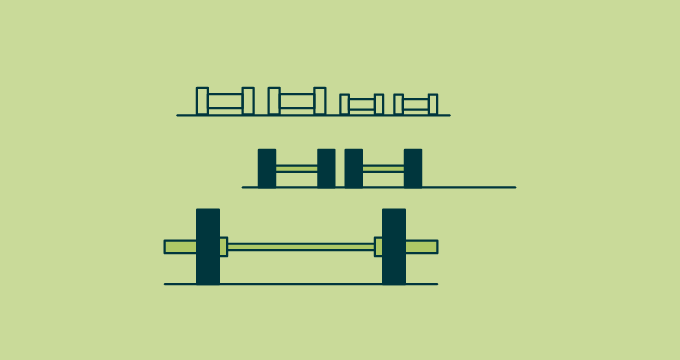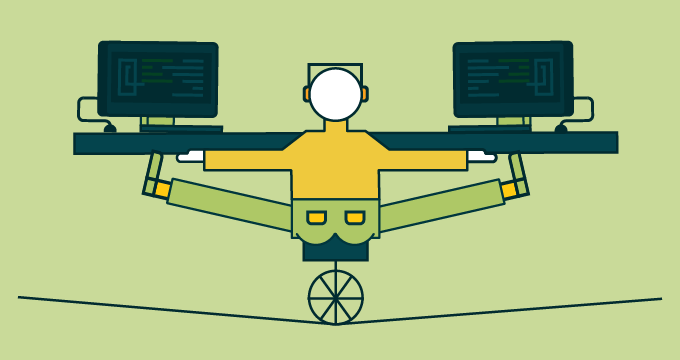Article • 7 min read
Reduce customer effort with great service
Von Anton de Young
Zuletzt aktualisiert: March 22, 2022
Customer effort reduction is in the spotlight now, as you well know, and we’re all spending plenty of time sorting out what it all means for how we design our products and processes and how we provide customer service. Chances are that many of you now have customer effort reduction as one of your key MBOs (alongside the very important customer effort score). If not, there’s an empty bullet point fidgeting impatiently on that quarterly goals slide deck you’re working on.
It’s time to add it in there because focusing on effort reduction (along with many other customer service metrics) is going to help you keep your customers coming back, build their long-term loyalty, and attract new customers.
You can do a lot can to reduce customer effort by designing experiences that are easier to understand and use. However, a big part of effort reduction and improving your customer effort score is about the interactions and relationships your customer service team has with your customers.
First, gather customer feedback
The journey to reduce customer effort begins with understanding where your customers are getting stuck. You do that by observing the customer experience, gathering customer feedback, and mining your support data to identify your effort hot spots.
Observing the customer experience
To truly understand your customers’ experience, you need to follow the paths they take to do business with you. Start by doing a customer journey mapping exercise and you’ll have baseline understanding of the segments that directly impact the customer effort score. Throw in usability testing and you’ll get the feedback you need to create a customer-centric product design.
Asking for feedback
Observing the customer experience is just the beginning. You need to be even more proactive. That’s why you should also request customer feedback directly using surveys such as the Customer Satisfaction (CSAT) survey, the aforementioned Customer Effort Score (CES), and the Net Promoter Score (NPS).
Mining your support data
You should also take advantage of the feedback you’re already getting in your support requests. This may actually be a more effective way to spot areas that are requiring too much effort.
You can do this by categorizing your support requests into product areas (e.g., Account Creation, Shopping Cart, and so on) using an About field on your ticket form. You can then analyze your support requests by these products areas and drill in deeper to discover, for example, how many tickets are being generated, how long they’re taking on average to solve, and the average CSAT ratings for each area. These are some of the baseline influences on customer effort scores.
After you’ve gathered your customer feedback and identified what needs to be improved, you need to share that information with the teams in your company that can act on the feedback. Much of that feedback will go to the Product, Design, and Development teams and will be used to improve your products, but much of the work of reducing effort is solely up to the customer service team.

Make the easy stuff easy
Self-service is often the fastest and lowest effort way for customers to solve their problems. Customers like self-service because they don’t need to contact an agent or wait for a reply to a support request. Therefore, it reduces their effort and leads to greater satisfaction.
A self-service knowledge base is especially effective in handling the simpler support issues. If your customers can handle the simple things on their own (which is what they want), you can save your agents’ bandwidth for helping them deal with the more complex issues. Eventually, it helps to increase customer loyalty and your customer effort score.
Make it easy to contact you
With all the channels we now have for communicating with customers, contacting your business for support should be easy and low effort. That’s why it’s important to support the communication channels that your customers prefer and that result in higher customer satisfaction.
When customers are on your site, for example, live chat may be the best way for your customers to get quick and easy access to your support team. Customers love the convenience and immediacy of live chat and in a recent Zendesk research report it was rated #1 in customer satisfaction.
If you provide phone support, you can reduce customer effort by designing a streamlined interactive voice response (IVR) experience.
The Zendesk guide to customer service metrics
Learn the ins and outs of the most important customer service metrics that matter the most to your company.
Fix it right the first time
If your customers can have their issues resolved in just one contact with your support team, effort, obviously, is reduced significantly. That’s why we track the first contact resolution (FCR) metric so closely – it can be an excellent indicator of the success you’re having reducing effort.
However, a high FCR rate may also mean that you’ve got lots of issues that might be handled even better with self-service – lots of support issues that are easy to resolve that customers can handle on their own. You should also compare your FCR with your number of ticket reopens. If the first resolution doesn’t stick, resulting in reopened tickets, you’re not doing a good job reducing effort.
Don’t complicate the conversation
By tracking resolution time and effort metrics you can gain an even better understanding of your customers’ support experience. Fast replies and first contact resolutions make customers happy and satisfied. But, it’s not all easy stuff. Many times, support issues can be complex and high effort, and requires lots of back and forth between agents and customers.
To ensure that those back and forth conversations aren’t getting bogged down and requiring lots of effort from your customers, or your agents, keep your eyes on your time to resolution, ticket updates, and requester wait time metrics.
Fix the next thing the first time
When your customers reach out to you for help, take the opportunity to ask them what else you can help them with. Depending on what they’re doing with your products, you’re probably able to predict the next issue they’re going to face. If you can, and you can help them in the same support request, chat, or call, you can reduce future effort.
The next issue avoidance metric can help you track this. Use it to discover how many customers have requested multiple support requests for the same product/subject area. Dig into what those support requests were about and you can predict what might affect other customers. By tracking this over time, you can determine if you’re
successfully deflecting related support issues for your customers.

Reduce agent effort, reduce customer effort
Reducing effort for your agents is important as well. If it’s easy for them to provide service, it’s a better and lower effort experience for your customers. Well-trained agents create better support experiences and great tools make is easier for them to help reduce customer effort.
As an example, the Zendesk Pathfinder app shows agents if a customer has visited a help center article or community forum before being contacted by an agent. This gives the agent context for helping the customer solve their problem faster. It also helps to prevent the frustrating customer experience of being told to read an article that they’ve already seen.
Take advantage of new tech
With all the data we’re now gathering and all the metrics we have for tracking the customer experience and satisfaction, much of the future of effort reduction will be driven by new support technologies such as Satisfaction Prediction and Answer Bot.
Satisfaction Prediction monitors the many touch points in a customer interaction (including wait times and number of replies) and predicts if the interaction is likely to result in a bad CSAT rating and unhappy customer. This provides agents with the insight they need to prevent that negative outcome.
The Answer Bot uses artificial intelligence to automatically reply to customers’ questions with content from the relevant knowledge base articles in your Help Center. This results in faster resolution times, increases the efficiency of your self-service, and frees your agents to focus on what people do best: empathize, troubleshoot, manage complexity, and make human connections that build better relationships.
Anton de Young is a published writer and photographer. As a long-time Zendesk employee, he built the Zendesk customer education and training teams, and then as a Marketing Director launched the Zendesk customer service leadership program and event series, which he then helped to expand into the Relate website and event series. Now a freelancer, Anton is busy exploring the world from his new home in Lisbon, Portugal.
